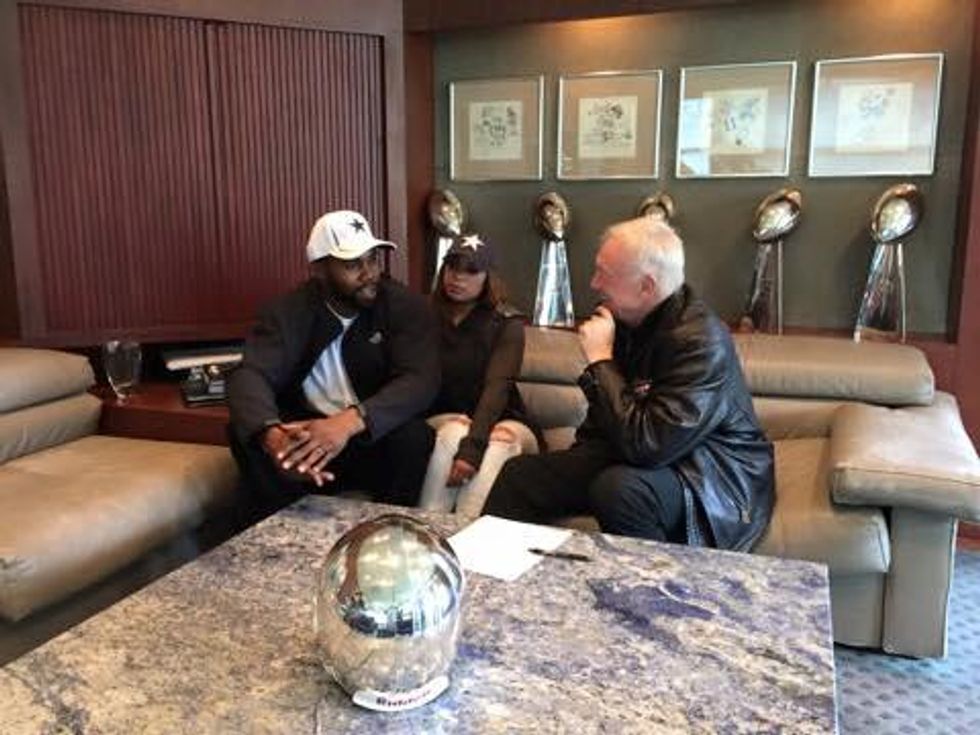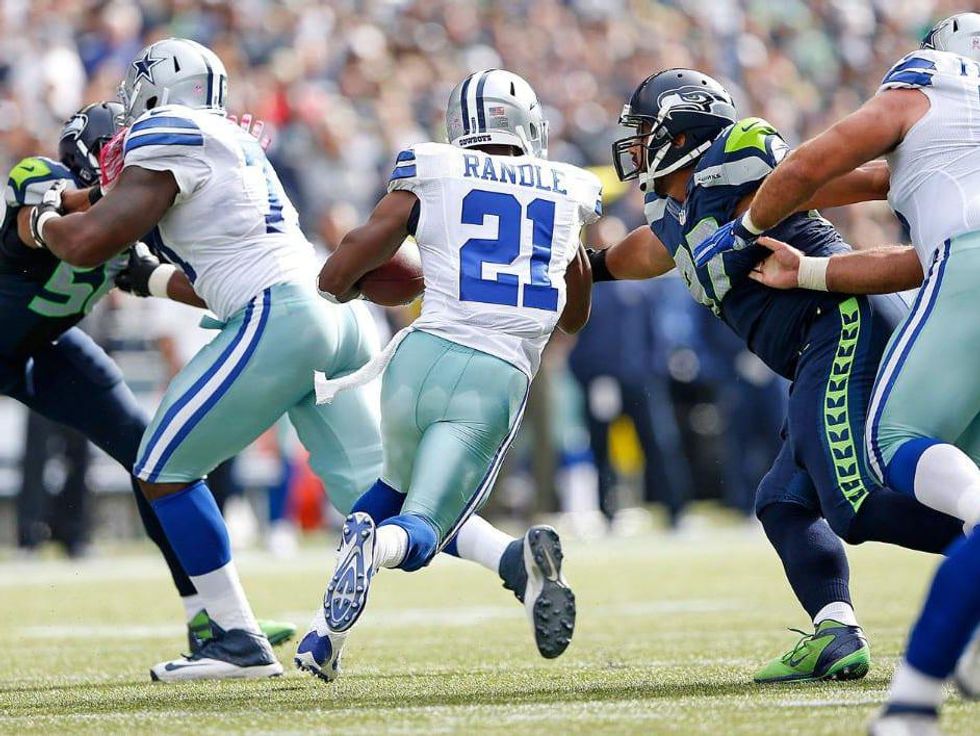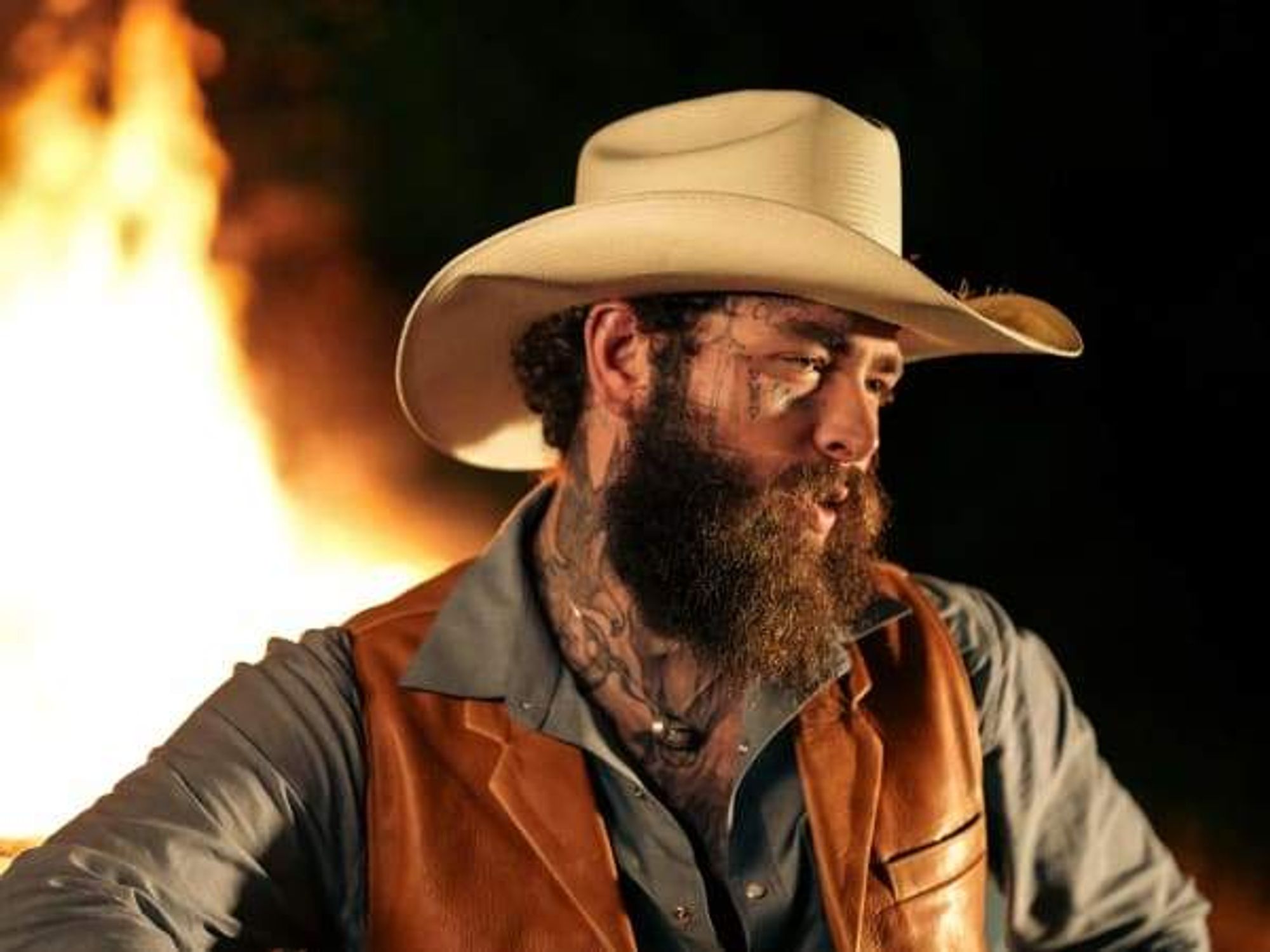The Draft Plan
Signs point to Dallas Cowboys' drafting a running back for their committee
Draft day in the NFL is difficult to predict. But I can say with relative certainty that the Dallas Cowboys will come away with at least one running back by the time the 2015 NFL draft is complete.
And that’s not just my gut talking.
First, the Cowboys are taking a hard look at several running backs this month at Valley Ranch. They’re allowed to invite 30 players to their facility for meetings and workouts.
Now, whom they invite isn’t necessarily indicative of whom they’re interested in, but various web sites with good sources have confirmed 24 of the players set to visit. Seven of them — more than one-quarter — are running backs.
The list features Alabama’s T.J. Yeldon, Wisconsin’s Melvin Gordon, Boise State’s Jay Ajayi, Nebraska’s Ameer Abdullah, Indiana’s Tevin Coleman, Georgia’s Todd Gurley and USC’s Javorius Allen. All of these backs are considered prospects to be taken in the first three rounds, with Gordon and Gurley the potential first-rounders.
It would suggest that the Cowboys are interested in using one of their first three picks of the draft to find a potential long-term successor to the departed DeMarco Murray. According to BloggingtheBoys.com, in the past four years, the Cowboys have drafted 14 players they hosted for pre-draft visits — including Murray.
How the Cowboys balance that desire with their potential defensive needs is another story. Even with signing defensive end Greg Hardy, the Cowboys need more weapons to bolster their anemic pass rush. They could also use a solid cornerback who could play right away. So it’s possible the Cowboys address defense early and still take a running back.
Fit will also be a consideration. It’s not necessary for the Cowboys to find a three-down back like Murray, but they must find a back that has the one-cut running style Murray used to set a team record in rushing a year ago. Gurley is a good fit, a powerful back that likes punishment. But he’s coming off a major knee injury.
Gordon may not be as good a fit because he’s slighter than Gurley, but he’s much faster. Some scouts consider Ajayi and Coleman to be the draft’s most complete backs. But Ajayi tends to bounce runs outside and Coleman, while exhibiting that one-cut style for Indiana, weighs only 206 pounds.
The running style is key because the Cowboys’ offensive line — one of the best in the NFL — uses a zone-blocking scheme that caters to that one-cut style. Plus the Cowboys invested in keeping the starters together when they signed right tackle Doug Free to a three-year deal last month.
Another reason to take a running back is what the Cowboys have in the wake of Murray’s departure. They knew the risk in trying to get Murray at a bargain, and now they must hope their backup plan works. Right now the projected starter is Darren McFadden, the oft-injured former first-round pick who has played in all 16 games in a season just once and has rushed for more than 1,000 yards in a season just once.
Behind him is an assemblage of backs with varying skills. Joseph Randle played well behind Murray a year ago and had a high yards-per-carry average (6.7). But you’re gambling he can carry a consistent load. Lance Dunbar is a burner who had one good quarter in a Thanksgiving Day game, but he can’t seem to stay healthy. Ryan Williams, who was on the practice squad last year, has the same problem.
Like the defensive line, what the Cowboys need at running back are options, which is why I believe they’ll select a back in the draft. They also need a future.
Every one of the Cowboys’ current backs will hit free agency no later than after the 2016 season. The back they select later this month — assuming they select one — will be a Cowboy for at least four years on a rookie contract. That outlasts any of their current options by two years.
The Cowboys can still have a productive running game without Murray. It’s not about total yards in the NFL. It’s about yards per carry. Look at last year’s 12 playoff teams. Eight of them averaged at least 4.0 yards per carry, considered by coaches and NFL personnel people as the baseline for a successful running game. The Cowboys averaged 4.5 yards per carry.
If the Cowboys are going to run the ball the way they did a year ago, they must have that sort of production per carry. Unlike last year, they’ll have to do it with a committee of backs. It’s clear after looking at the Cowboys’ preparation for the draft that they believe the committee needs another member.
Cowboys running back Darren McFadden, seen here talking with owner Jerry Jones, is bound to have some company in the backfield after the NFL draft later this month.



